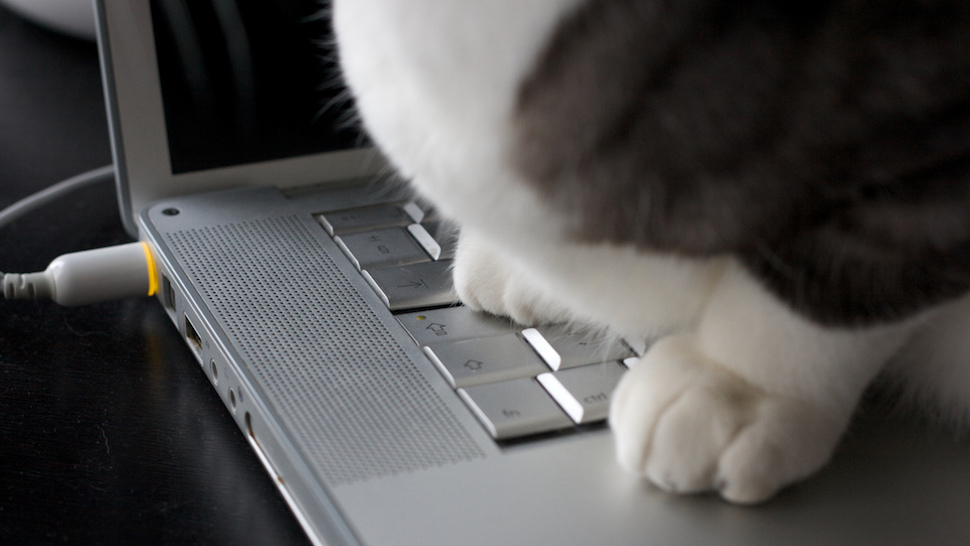This week we’re talking about logo changes — and if anyone ever actually likes them, how likely we are to get hit by a giant asteroid, the evolution of recorded music from wax cylinders to MP3s, and 25 years of PowerBooks, iBooks, and MacBooks.
Title illustration by Nick Criscuolo. Additional photo by Marcin Wichary.
Welcome to Lifehacker’s Thinking Cap, a series where we round up interesting, informative and thought-provoking podcasts, interviews, articles and other media that will teach you something new, inspire you and hopefully cap off your week nicely.
What Was the Last Logo Change People Actually Liked?

So Mozilla has a new logo and new branding. Good for them! It may not have been received very well around the web, and sure, it certainly warrants criticism. However, when we saw the new logo over here at Lifehacker HQ, we asked ourselves:
It turns out, we weren’t the only people to ask that question. In general, people don’t really care for redesigns or rebrandings, unless of course that rebranding plays on nostalgia, in which case it’s usually incredibly popular (or at least divisive.) That piece from Entrepreneur, even though it was published back in 2015, raises some good points:
It comes down to identity, says Karen Winterich, an associate professor of marketing at Pennsylvania State University. Consciously or not, we internalize the brands that we admire (and want to align ourselves with) as well as the brands that are a part of our daily lives. As the consumer-facing symbol of a brand’s packaged identity, when a logo changes we expect the underlying brand to change as well, which helps explain the intensity of consumers’ negative reaction to Apple’s logo update in 1999 (people tend to identify closely with the brand), and my reaction to Google’s update (the company’s logo is very much a fixture of my day-to-day routine).
In general, the stronger our associations with a brand, the more negatively we react when its logo changes. In one study, Winterich had 632 college students respond to logo redesigns for Adidas and New Balance athletic shoes created by professional graphic designers. For participants who expressed weak ties to the brands, the refreshed logos went over smoothly. Those who expressed a strong connection, however, tended to react negatively to the redesigns, which affected their attitude to the brands as a whole.
With every redesign, then, a brand risks alienating its core audience, a group that — through the megaphone that is social media — can easily vocalize its displeasure.
That’s all interesting — and quite true — but what do you think? Can you remember the last logo redesign you actually liked? What was it, and did it stick? Let us know in the discussions.
How Likely Are We to be Hit by an Asteroid?
The liklihood of the Earth being struck by asteroids is… well… pretty high. In fact, small objects pelt the Earth all the time, but thanks to a number of factors — the least of which being our atmosphere — very few of them manage to do any damage, or even go noticed by human beings at all. This video, from Real Life Lore, runs down exactly how often these objects tumble through our atmosphere, and how many of them actually make it all the way to the ground (spoiler: very few).
Additionally, it asks the question you’re probably already thinking: sure, small objects are one thing, but what about large ones like the one that killed the dinosaurs, or can cause massive extinction events or tremendous damage? Don’t worry, they get there too, but the good news is that the odds are very rare, and the vast majority of objects that are of the size to do any substantial damage like that are observed and known — we can track them in the sky. Of course, if we were on a collision course with one, whether we could do something about it is another story. [via Real Life Lore (YouTube)]
How the MacBook Has Changed Over the Years

The humble — or not so humble, depending on who you ask — Apple MacBook has seen a ton of design iterations over the years, and whether you love or hate Apple products, you have to acknowledge that those designs have influenced other PC manufacturers more than once. After all, the whole reason we got the term “ultrabook” is because other OEMs rushed to go thin, light, and long-life after Apple introduced the MacBook Air.
So this retrospective from ComputerWorld looks back at 25 years of MacBooks, starting with the Powerbook 100, making pit stops at the PowerBook, Titanium MacBook Pro, and iBook G3, and more along the way. It’s a slideshow, we warn, but it loads nice and quick (and only the element you click, not the whole page.) Check it out. [via ComputerWorld]
The Evolution of Recorded Music, from Records to Digital
From wax cylinders to mp3s, the history of recorded music is rich and deep, and probably more interesting than you may have initially thought. This series of three videos (the first of which is above, part two is here, and part three is here) from the Recording Academy are quick and informative, and fill you in on anything you may have missed.
For example, the first part starts with wax cylinders and the history of the gramophone, and even introduces you to early vinyl records. Part two however pushes into the more recent past and discusses magnetic media, like 8-Tracks and cassette tapes, and their versatility. Of course, the third part tackles all things digital, including the mp3 and other file formats, and the issue of audio quality. [via The Recording Academy: Part 1: Evolution of Recorded Music — Records] [Part 2: Analogue Tape] [Part 3: Digital, thanks Kottke!]
The Climax from Star Wars, with a Live Audience Seeing It in 1977
I wasn’t around to see Star Wars in theatres back in 1977 (a few years too late, I’m afraid) but I could only imagine what it must have been like. Although I don’t have to really imagine — and neither do you — thanks to this tidbit from Boing Boing:
Boing Boing previously postedabout YouTube user William Forsche, who had the forethought to bring a tape recorder to the movie theatre back when he was a kid in order to capture the audience’s reaction to the original Star Wars. Well, YouTuber user Homer Thompson took that raw audio and put it alongside the visuals from the Star Wars climax, which provides a much better sense of what the audience is responding to. Han’s appearance gets the most applause, although the audience is pretty jazzed about the Death Star’s destruction too. The whole thing is a reminder of just how mindblowing the original Star Wars was when it first came out.
Absolutely stunning, and a great way to get a start on the week. May the force be with you, always. [via Boing Boing]
If you have thought-provoking stories, interesting podcasts, eye-opening videos, or anything else you think would be perfect for Brain Buffet, share it with us! Email me, leave it as a comment below, or send it over any way you know how.

Comments